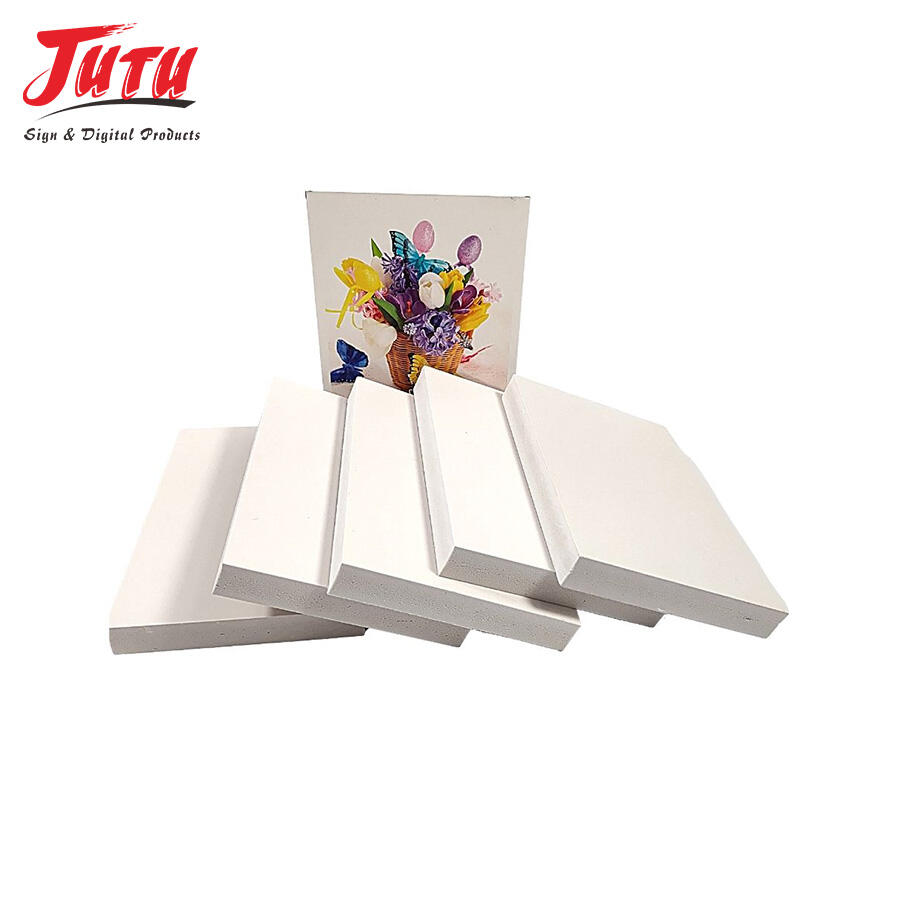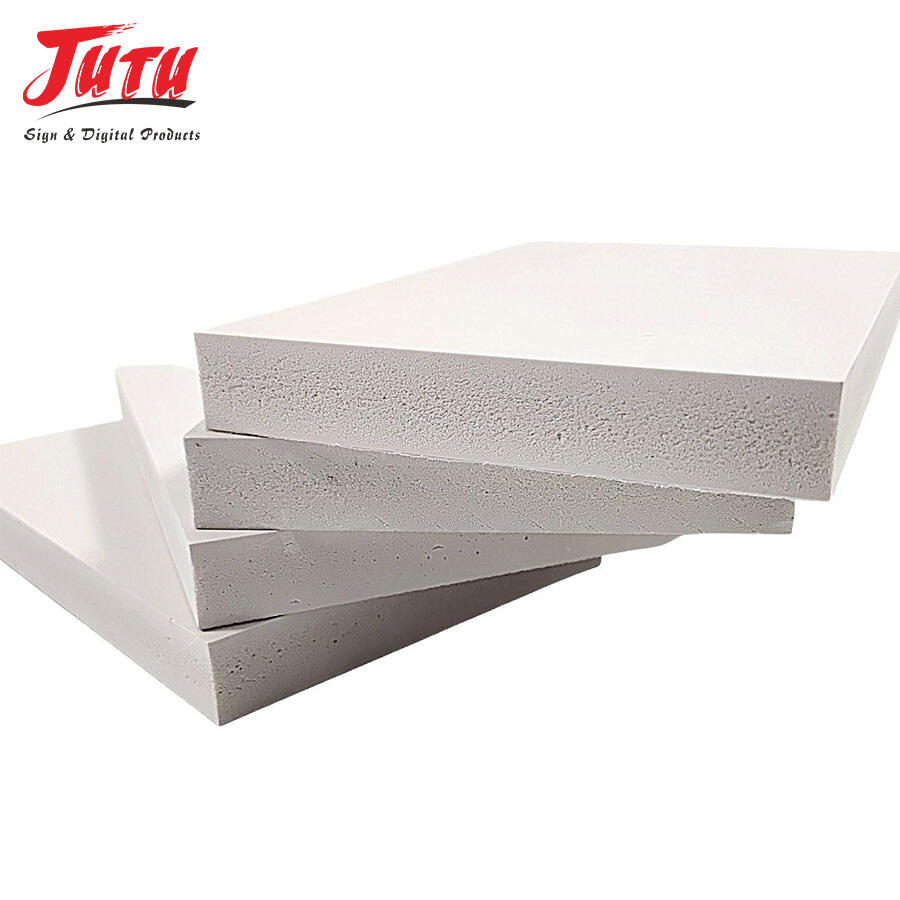Can PVC Foam Board Be Used for Indoor and Outdoor Use?
PVC foam board, a lightweight and versatile material made from polyvinyl chloride, has gained popularity in construction, signage, furniture, and DIY projects. Its unique combination of durability, ease of use, and affordability makes it a common choice for both indoor and outdoor applications. But many people wonder: can PVC foam board truly stand up to the demands of both environments? The answer is yes, but its performance depends on the type of PVC foam board, its thickness, and the specific conditions it faces. This guide explores how PVC foam board performs indoors and outdoors, its key properties that enable such versatility, and the best practices for using it in different settings.
Understanding PVC Foam Board
PVC foam board is a rigid sheet material created by expanding PVC resin with additives to form a foam core, sandwiched between solid PVC layers. This structure gives it a balance of strength, lightness, and insulation. There are two main types:
- Free Foam PVC Board: Has a uniform, closed-cell foam structure with smooth surfaces. It is lightweight, easy to cut, and ideal for indoor use, signage, and decorative projects.
- Density PVC Foam Board: More rigid and dense, with a higher resistance to impact and weather. It is better suited for outdoor use, structural applications, or areas with heavy wear.
Both types are water-resistant, chemical-resistant, and non-porous, but their density and additives determine their suitability for specific environments.
Why PVC Foam Board Works for Indoor Use
Indoor environments demand materials that are safe, durable, easy to maintain, and aesthetically flexible—qualities that PVC foam board excels in.
- Water Resistance for Humid Indoors: Bathrooms, kitchens, and basements are prone to moisture, but PVC foam board resists water absorption. Unlike wood, it won’t warp, rot, or grow mold when exposed to steam or spills, making it ideal for backsplashes, wall panels, or shower surrounds.
- Low Maintenance and Easy Cleaning: Indoor surfaces often need regular cleaning. PVC foam board’s smooth, non-porous surface allows for easy wiping with soap and water or mild cleaners, making it suitable for high-traffic areas like offices, schools, or retail spaces. It won’t stain easily, even with food, ink, or dirt.
- Versatility in Design: PVC foam board can be cut, drilled, glued, or painted to match any interior style. It is commonly used for wall decor, cabinet inserts, display shelves, or custom furniture. Its lightweight nature makes it easy to install, even on walls or ceilings, without heavy support structures.
- Safety and Compliance: PVC foam board is flame-retardant in many grades, meeting safety standards for indoor use. It emits low levels of volatile organic compounds (VOCs) once installed, making it safe for homes, schools, and healthcare facilities.
From residential renovations to commercial interiors, PVC foam board offers a practical, cost-effective solution for indoor projects.
How PVC Foam Board Performs in Outdoor Use
Outdoor environments are harsher, with exposure to rain, UV rays, temperature changes, and physical wear. However, the right type of PVC foam board can withstand these conditions effectively.
- Weather Resistance: PVC foam board is inherently water-resistant, so it won’t absorb rain or snow, preventing swelling or degradation. Its closed-cell structure blocks moisture from seeping into the core, making it suitable for outdoor signs, garden decor, or exterior cladding.
- UV Stability: While standard PVC foam board can fade or become brittle over time with direct sunlight, many outdoor-grade boards are treated with UV inhibitors. These additives protect against sun damage, maintaining color and structural integrity for years. Look for boards labeled “UV-resistant” for outdoor use.
- Temperature Tolerance: PVC foam board handles temperature fluctuations better than materials like wood or cardboard. It remains rigid in cold weather and resists warping in heat, making it suitable for outdoor furniture, planters, or signage in climates with extreme seasons.
- Impact and Wear Resistance: Outdoor applications often face bumps, scrapes, or wind-driven debris. Dense PVC foam board is tough enough to resist cracking or denting, making it a durable choice for outdoor play equipment, outdoor kiosks, or patio covers.
With proper selection (opting for UV-resistant, dense grades), PVC foam board performs reliably in outdoor settings.

Key Factors for Choosing PVC Foam Board for Indoor vs. Outdoor Use
To ensure PVC foam board works well in your intended space, consider these factors:
- Grade and Density: For indoor use, free foam PVC board (lower density) is sufficient for most projects. For outdoor use, choose high-density PVC foam board with UV inhibitors to resist weather and sun damage.
- Thickness: Thicker boards (3mm or more) offer better structural support and durability. Outdoor projects like signage or cladding benefit from thicker boards to withstand wind and impact, while indoor decor can use thinner, lighter sheets.
- Finish and Treatment: Indoor boards can have a matte or glossy finish for aesthetics. Outdoor boards need a UV-resistant coating or treatment to prevent fading and degradation. Some outdoor boards also come with a textured surface for better grip or weather resistance.
- Installation Method: Indoor installation often uses glue, screws, or nails, as the environment is stable. Outdoor installation may require weatherproof adhesives, stainless steel fasteners (to prevent rust), or ventilation gaps to allow moisture escape, even though the board itself is water-resistant.
Matching the board’s properties to the environment ensures long-lasting performance.
Common Applications of PVC Foam Board Indoors
PVC foam board’s versatility makes it useful in countless indoor projects:
- Wall and Ceiling Panels: Used in bathrooms, kitchens, or basements as a water-resistant alternative to drywall or wood. It is easy to install and can be painted to match decor.
- Furniture and Cabinetry: Makes lightweight, durable shelves, cabinet doors, or drawer fronts. It resists scratches and stains, ideal for busy households or commercial spaces.
- Signage and Displays: Custom signs, retail displays, or trade show booths benefit from PVC foam board’s smooth surface, which prints well and holds color.
- DIY Projects: Crafting, model making, or home decor projects use PVC foam board for its ease of cutting and shaping. It is a favorite among hobbyists for its flexibility.
Indoors, PVC foam board shines as a practical, affordable material for both functional and decorative uses.
Common Applications of PVC Foam Board Outdoors
Outdoor projects that benefit from PVC foam board include:
- Outdoor Signage: Business signs, directional signs, or real estate signs use UV-resistant PVC foam board for durability in rain, sun, or snow.
- Garden and Patio Decor: Planters, outdoor wall art, or birdhouses made from PVC foam board resist rot and moisture, lasting longer than wood in garden settings.
- Exterior Cladding: Used as a lightweight, low-maintenance alternative to wood or metal for sheds, garages, or outdoor structures. It won’t warp or peel in wet weather.
- Outdoor Furniture: Small tables, benches, or chair components made from dense PVC foam board are easy to clean and resist weather damage, ideal for patios or pool areas.
Outdoors, PVC foam board offers a durable, cost-effective option for projects that need to withstand the elements.
Maintenance Tips for PVC Foam Board
Proper maintenance extends the life of PVC foam board, whether indoors or outdoors:
- Indoor Maintenance: Clean with mild soap and water, avoiding abrasive cleaners that can scratch the surface. Wipe up spills promptly to prevent staining (though PVC is highly stain-resistant). Check for loose fasteners or adhesive periodically, especially in high-moisture areas like bathrooms.
- Outdoor Maintenance: Rinse with water to remove dirt, debris, or pollen. For stubborn stains, use a soft brush and mild detergent. Inspect annually for signs of UV damage (fading, brittleness) or loose installation. Re-paint or re-coat with UV-resistant paint every 2–3 years to maintain protection.
Minimal maintenance keeps PVC foam board looking and performing well for years.
FAQ
Is PVC foam board waterproof for outdoor use?
Yes, PVC foam board is water-resistant and does not absorb moisture, making it suitable for outdoor use. However, choose UV-resistant grades to prevent sun damage, as standard boards may fade or become brittle over time.
Can PVC foam board be painted for indoor or outdoor use?
Yes. Both indoor and outdoor PVC foam board can be painted with acrylic or latex paint. For outdoor use, use paint with UV protection to enhance durability and color retention.
How long does PVC foam board last outdoors?
With proper selection (UV-resistant, high-density), PVC foam board can last 5–10 years outdoors. Factors like direct sunlight, extreme temperatures, and physical wear affect lifespan.
Is PVC foam board safe for indoor use in homes with children or pets?
Yes. PVC foam board is non-toxic once installed, emits low VOCs, and is flame-retardant in most grades. It is also easy to clean, making it safe for homes with children or pets.
Can PVC foam board replace wood for outdoor projects?
In many cases, yes. PVC foam board is lighter, more water-resistant, and lower-maintenance than wood for outdoor signs, decor, or cladding. However, it may not match wood’s structural strength for heavy-load applications like large decks.
Table of Contents
- Understanding PVC Foam Board
- Why PVC Foam Board Works for Indoor Use
- How PVC Foam Board Performs in Outdoor Use
- Key Factors for Choosing PVC Foam Board for Indoor vs. Outdoor Use
- Common Applications of PVC Foam Board Indoors
- Common Applications of PVC Foam Board Outdoors
- Maintenance Tips for PVC Foam Board
- FAQ

